
- By Tom Kirkman
(This article orginally appeared in RodMaker Magazine, Volume 3 #3)
For those rod builders who sell rods to the public, mere functionality is not enough. Consumers willing to pay a premium price expect a premium product.
A fishing buddy of mine likes to differentiate between the terms "homemade" and "hand crafted". He points out that homemade items are usually a bit crude or rough around the edges, no matter how noble the intentions of the maker were to begin with. Hand crafted, he points out, is a better term for something which was made by hand, but is so nicely executed that one has a hard time figuring out just how it was done. He has a point.
Sometimes the difference between a hand made item that exudes craftsmanship and one that simply looks, "handmade", is in the fine details. Often it is this overall attention to fine fit and finish which elevates one rod into the realm of high quality, or drops another into the heap of also-rans.
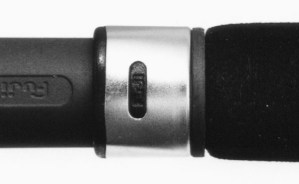
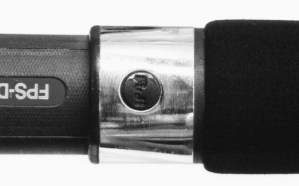 Photos 1A and 1B - In the two photographs here, note the way the foregrips fit against the reel seats. In the top photo the grip and seat make a flush fit, but the grip's outside diameter is such that it leaves the seat's sharp forward edge exposed. In the lower photo, note how the grip not only fits flush against the seat, but is sized to provide a pleasing appearance at this junction. If you were asked to judge which looked better, which one would you choose?
Photos 1A and 1B - In the two photographs here, note the way the foregrips fit against the reel seats. In the top photo the grip and seat make a flush fit, but the grip's outside diameter is such that it leaves the seat's sharp forward edge exposed. In the lower photo, note how the grip not only fits flush against the seat, but is sized to provide a pleasing appearance at this junction. If you were asked to judge which looked better, which one would you choose?
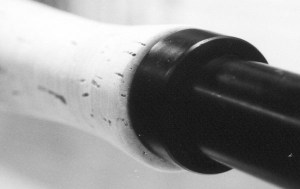
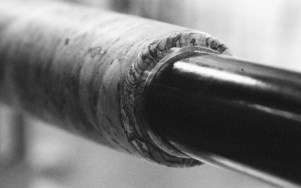 Photos 2A and 2B - Note the concentricity of the seats to the grips in the photos below. Both are certainly functional, but the rod in the top photo depicts carelessness while the rod in the bottom photo depicts careful attention to detail. How much difference do these little things make? To a potential customer they may mean a great deal.
Photos 2A and 2B - Note the concentricity of the seats to the grips in the photos below. Both are certainly functional, but the rod in the top photo depicts carelessness while the rod in the bottom photo depicts careful attention to detail. How much difference do these little things make? To a potential customer they may mean a great deal.
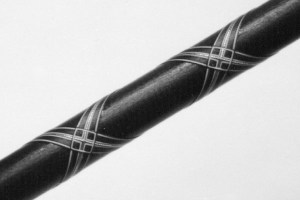
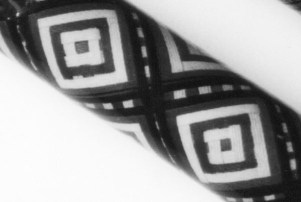 Photos 3A and 3B - Of the two wraps shown here, it is obvious that the one on the bottom is far more intricate and difficult to perform. But it is also filled with flaws such as gaps and misplaced threads. Does it indicate a higher level of craftsmanship than the wrap shown at top, which though far simpler, is more perfectly done? Which would command the higher price?
Photos 3A and 3B - Of the two wraps shown here, it is obvious that the one on the bottom is far more intricate and difficult to perform. But it is also filled with flaws such as gaps and misplaced threads. Does it indicate a higher level of craftsmanship than the wrap shown at top, which though far simpler, is more perfectly done? Which would command the higher price?
|
So what distinguishes good fit and finish? What qualities point to fine craftsmanship? The funny thing is that by and large the public doesn't know. They can't tell you the difference, but they know it when they see it. It's not always something that can be pointed out with a finger, but something that can nearly always be seen, felt or noticed in a subtle way. The lines, the flow of the assembled parts, the pleasing contours or lack thereof, all contribute to the overall image of the final product. Good fit and finish goes beyond mere technical expertise. Even rods that exude a somewhat crude appearance can be functionally perfect tools. However, those rods that exude both technical expertise and a fine fit and finish are the ones that are ultimately treasured and passed down to future generations.
A good fit and finish also extends beyond the absence of things such as visible glue lines, sanding marks, hazy finish or poor component alignment. Good fit and finish also lies in how the various parts relate to each other. How they are sized, combined and used in the final product.
For those rod builders who sell rods to the public, achieving a good fit and finish is often the very thing that not only makes the sale, but captures the respect of the customer as well, convincing him or her that it is well deserving of the price asked.
Over the years I've had the opportunity to view many custom rods. Some were from experienced builders, some from novices. But the experience of the builder did not always impact directly upon the quality of the fit and finish of the rods. Some old time builders are still lacking in this area, while the excellent work of many newcomers defies their limited experience at the craft.
Improving the fit and finish, the pleasing lines of a rod, is not particularly easy for many. Sometimes the knack of just "knowing what looks good" is a natural attribute that you either have or don't have. Luckily, it is also one that can be learned to some extent. But you have to know where to look and what things to pay attention to.
One of the easiest ways to learn is to spend time carefully examining not only the work of other rod builders, but the work of other artisans from other crafts. Woodworkers are plentiful and in terms of good fit and finish, pleasing lines and surface finish they fall into the same two distinct categories as do rod builders. They either have it or they don't. Examining samples of as many items as possible usually yields some of both, and you will know the difference between the two when you see them.
How can you tell? It's quite likely that your own built-in sense of what looks good and what doesn't will serve you well in this regard. When you find an item that just doesn't look right, study it carefully and try to distinguish what it is that causes you to reject it as worthy of high regard. Likewise, when you see an item that strikes you as stunning, elegant or expensive by appearance alone, examine it closely in order to discern what it is that makes it appear so. Note the fit and finish of the related parts. Look carefully and make mental note of the lines of the object, the combination of colors or textures and the often simple form behind it all.
There are many places to look, and much to learn from. Craft shows, magazines and museums all feature the work of accomplished artists and craftsmen, whose work has been accepted as the best of the best. Study these in their entirety, as well as in each subtle detail. Notice the consistency of how parts fit around a circumference, how materials are transitioned from one to another and the lack of anything which detracts from the object.
For rod builders, putting these details into practice might be as simple as paying attention to simple touches like the edges of a grip. Too round, too sharp? Where is that happy middle ground where the edge appears elegant, rather than crudely rounded or sharply commercial? Most fishing rods contain components that are round. The blank, the grips, the reel seat; all round. What diameter relationship between each part creates a visually pleasing object versus a hodgepodge of odd but interconnecting pieces. While it is important to understand that function sometimes dictates the form an object must take, allowances must be made and action taken beforehand to make sure that while function is maintained, form is not compromised.
Many rod builders enjoy trying their hand at new techniques, some of which are quite difficult. But much practice is often necessary before such a technique begins to look appealing, instead of haphazard or crude. I am reminded of the current state of Olympic figure skating where difficult yet failed moves receive higher scores than simple, yet more perfectly performed routines. The former may get the higher score, but we all know which is more pleasing to watch. Let's consider the attempt of a new weave or closed wrap with multiple axis', which may be far beyond anything a particular builder has yet tried. Should it wind up on a customer's rod along with tiny but noticeable gaps, poor alignment, etc., it will be far less impressive than would a simpler, yet more expertly done wrap would. Remember that difficult, complicated and intricate work done poorly, does little to impress a customer. Such work may only remind the viewer of the lack of total competence yet possessed by the maker. It is important that whatever you do, you do well. Failure in this regard subtly destroys the look we have been discussing here.
At this point many will offer the suggestion that perfect function does not depend upon a perfect cosmetic fit and finish. They would be correct. However, the appearance of a product, the overall fit and finish, is the statement the maker has made concerning the overall quality of the product. It is by this first visual impression that the customer or eventual owner will form his or her initial idea of what the product is worth. A rod that is perfectly functional, yet a little rough around the edges, may have a hard time getting serious consideration from anyone.
And what of those who are able to construct a rod which does possess good fit and finish and yet lacks functionality? Such a case is certainly the rare exception. A craftsman who has spent the time and effort to hone his or her abilities in the area of fine detail is nearly always more than competent when it comes to crafting a product that is equally functional.
Attaining such a level of craftsmanship is harder for some than for others. But nearly everyone can improve. Careful observation and understanding of the work of other craftsmen, of any discipline or trade, provides ideas and lessons. Practice and experience on your own will eventually help to incorporate these very things into your own work. Remember that quality, good fit and finish, is rarely if ever an accident. Rather it is the result of careful observation and a willingness to practice until a certain level of competence is attained.
That which separates an item with an unknown yet certain elegance and beauty from what is otherwise haphazardly homemade is subtle yet definite. By perfecting your attention for detail and studying those objects which have that certain "something" you can often incorporate similar minute details into your own work, transforming it from something which not only performs well, but is held in high regard by all who view it.
~ Tom Kirkman
|
| |









